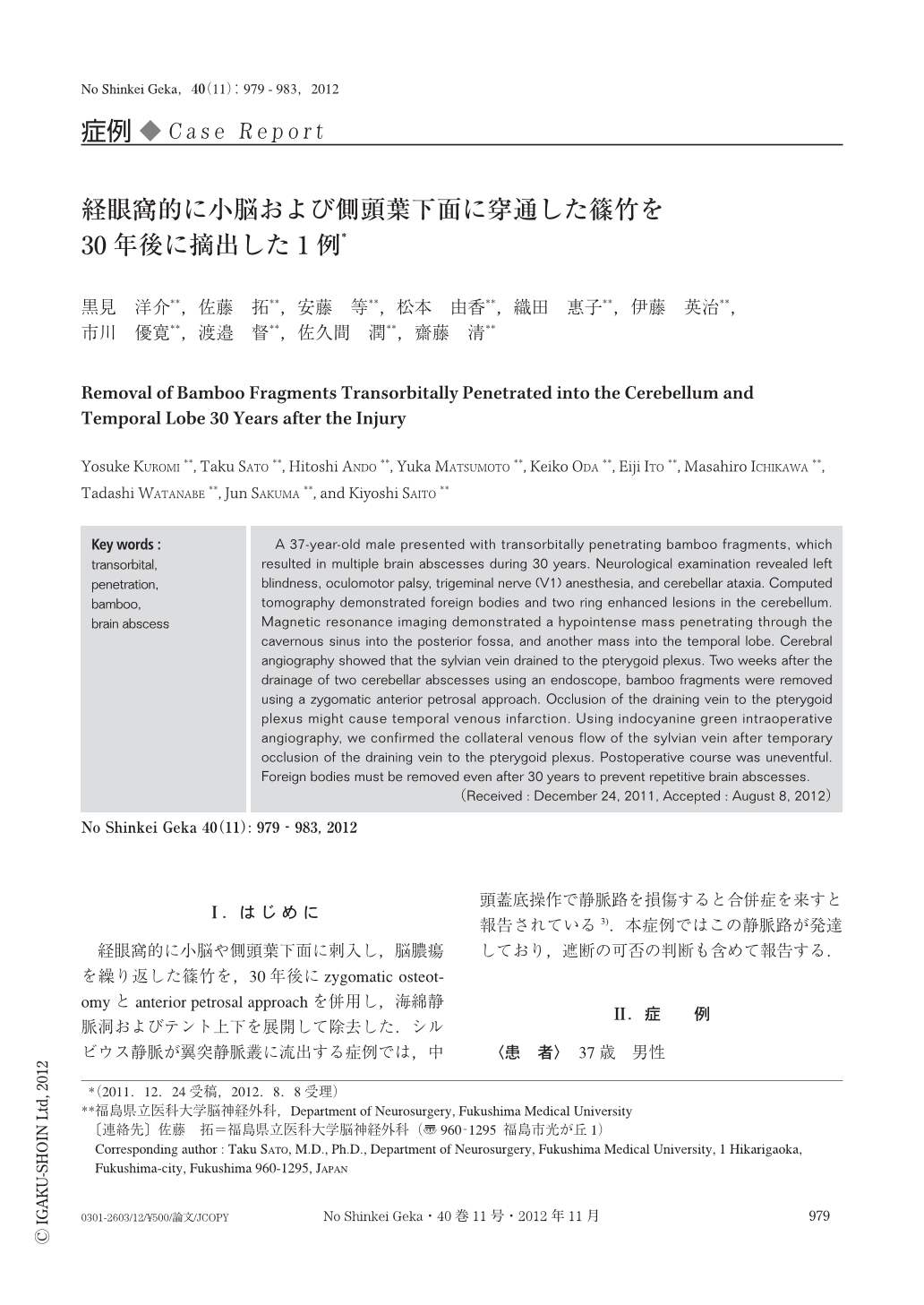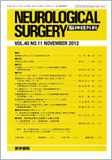Japanese
English
- 有料閲覧
- Abstract 文献概要
- 1ページ目 Look Inside
- 参考文献 Reference
Ⅰ.はじめに
経眼窩的に小脳や側頭葉下面に刺入し,脳膿瘍を繰り返した篠竹を,30年後にzygomatic osteotomyとanterior petrosal approachを併用し,海綿静脈洞およびテント上下を展開して除去した.シルビウス静脈が翼突静脈叢に流出する症例では,中頭蓋底操作で静脈路を損傷すると合併症を来すと報告されている3).本症例ではこの静脈路が発達しており,遮断の可否の判断も含めて報告する.
A 37-year-old male presented with transorbitally penetrating bamboo fragments, which resulted in multiple brain abscesses during 30 years. Neurological examination revealed left blindness, oculomotor palsy, trigeminal nerve (V1) anesthesia, and cerebellar ataxia. Computed tomography demonstrated foreign bodies and two ring enhanced lesions in the cerebellum. Magnetic resonance imaging demonstrated a hypointense mass penetrating through the cavernous sinus into the posterior fossa, and another mass into the temporal lobe. Cerebral angiography showed that the sylvian vein drained to the pterygoid plexus. Two weeks after the drainage of two cerebellar abscesses using an endoscope, bamboo fragments were removed using a zygomatic anterior petrosal approach. Occlusion of the draining vein to the pterygoid plexus might cause temporal venous infarction. Using indocyanine green intraoperative angiography, we confirmed the collateral venous flow of the sylvian vein after temporary occlusion of the draining vein to the pterygoid plexus. Postoperative course was uneventful. Foreign bodies must be removed even after 30 years to prevent repetitive brain abscesses.

Copyright © 2012, Igaku-Shoin Ltd. All rights reserved.


